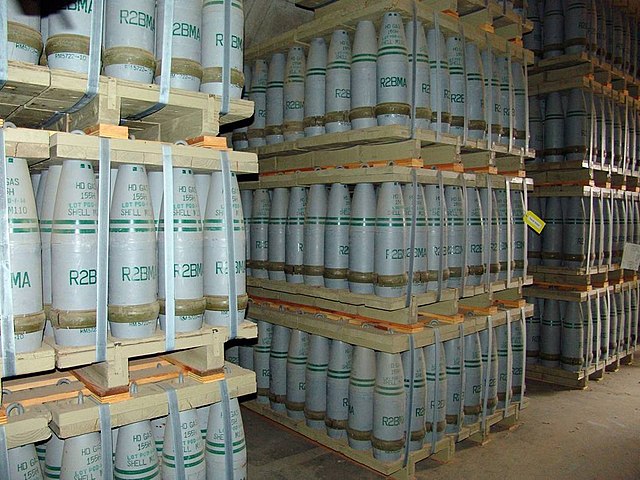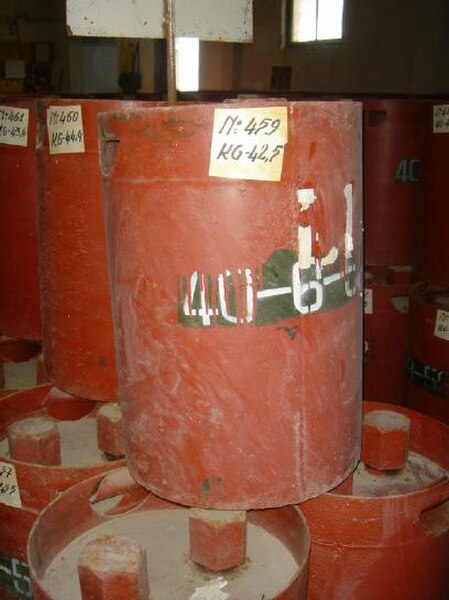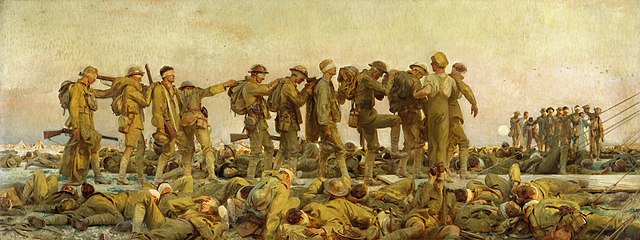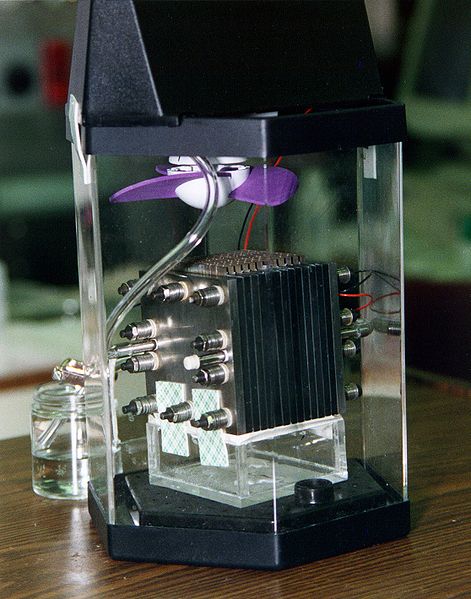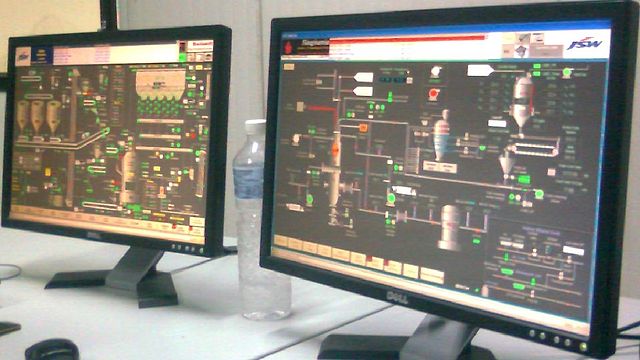A chemical weapon (CW) is a specialized munition that uses chemicals formulated to inflict death or harm on humans. According to the Organisation for the Prohibition of Chemical Weapons (OPCW), this can be any chemical compound intended as a weapon "or its precursor that can cause death, injury, temporary incapacitation or sensory irritation through its chemical action. Munitions or other delivery devices designed to deliver chemical weapons, whether filled or unfilled, are also considered weapons themselves."
Pallets of 155 mm artillery shells containing "HD" (mustard gas) at Pueblo Depot Activity (PUDA) chemical weapons storage facility
Image: Soviet chemical weapons canisters from a stockpile in Albania
A British gas bomb that was used during World War I
John Singer Sargent's iconic World War I painting: Gassed, showing blind casualties on a battlefield after a mustard gas attack
Chemical engineering is an engineering field which deals with the study of operation and design of chemical plants as well as methods of improving production. Chemical engineers develop economical commercial processes to convert raw materials into useful products. Chemical engineering uses principles of chemistry, physics, mathematics, biology, and economics to efficiently use, produce, design, transport and transform energy and materials. The work of chemical engineers can range from the utilization of nanotechnology and nanomaterials in the laboratory to large-scale industrial processes that convert chemicals, raw materials, living cells, microorganisms, and energy into useful forms and products. Chemical engineers are involved in many aspects of plant design and operation, including safety and hazard assessments, process design and analysis, modeling, control engineering, chemical reaction engineering, nuclear engineering, biological engineering, construction specification, and operating instructions.

Chemical engineers design, construct and operate process plants (fractionating columns pictured)
George E. Davis
Demonstration model of a direct-methanol fuel cell. The actual fuel cell stack is the layered cube shape in the center of the image.
Chemical engineers use computers to control automated systems in plants

